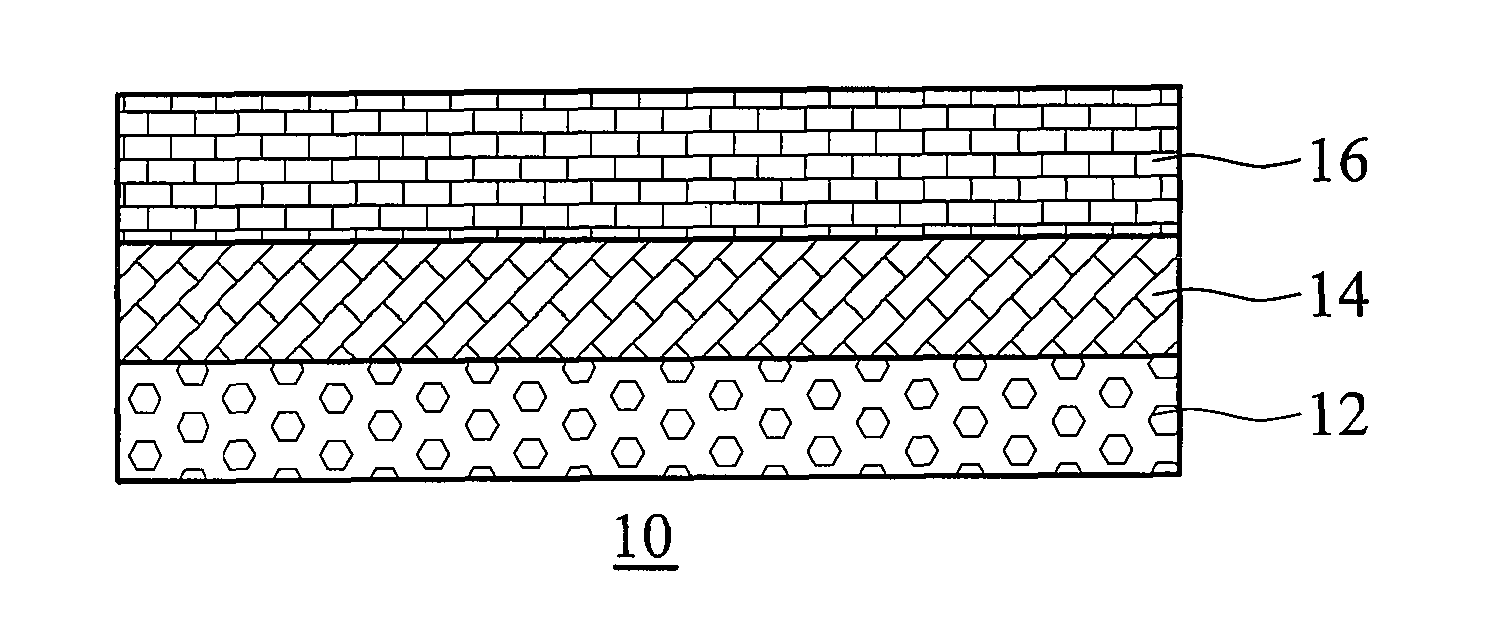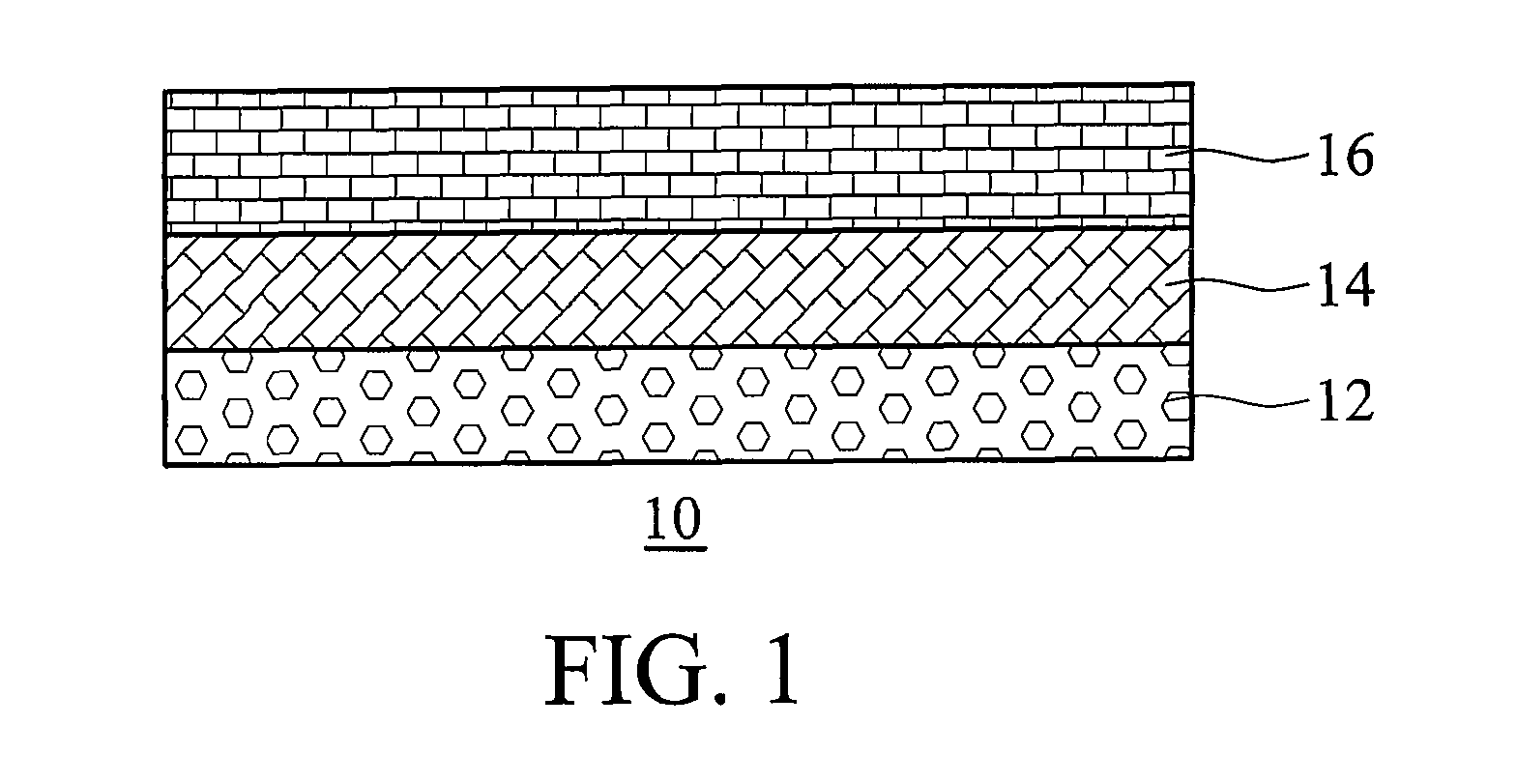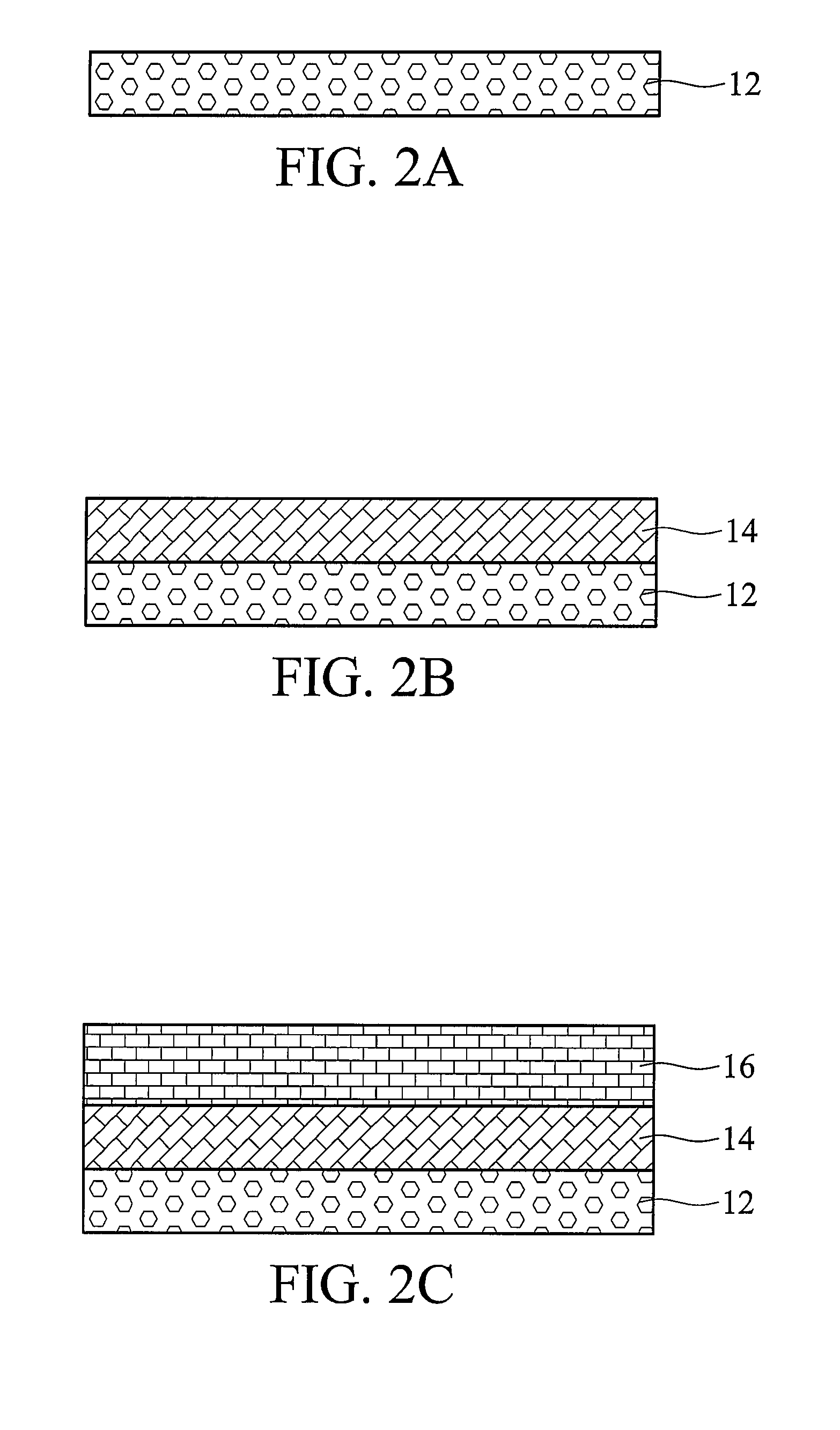Semiconductor structures
a technology of semiconductors and structures, applied in the direction of semiconductor devices, basic electric elements, electrical equipment, etc., can solve the problems of degrading the structural, morphological, electronic properties, stacking faults, point defects, etc., and achieve the effect of reducing the residual stress between the polycrystal substrate and the nucleation layer and reducing the density of dislocations
- Summary
- Abstract
- Description
- Claims
- Application Information
AI Technical Summary
Benefits of technology
Problems solved by technology
Method used
Image
Examples
example 1
Preparation of Polycrystal Substrate I for Growth of Single Crystal Layer
[0033]First, gallium oxide powders were shaped into a gallium oxide ceramic substrate. After CMP, the gallium oxide ceramic substrate was sintered in a nitrogen furnace to form a polycrystal gallium nitride substrate.
[0034]Next, a first single crystal gallium nitride layer obtained by the smart cut technique was transferred to the polycrystal gallium nitride substrate. The first single crystal gallium nitride layer was directly bonded on the polycrystal gallium nitride substrate.
[0035]After CMP, a second single crystal gallium nitride layer was grown on the first single crystal gallium nitride layer by metal organic chemical vapor deposition (MOCVD) process.
example 2
Preparation of Polycrystal Substrate II for Growth of Single Crystal Layer
[0036]First, gallium oxide powders were shaped into a polycrystal gallium oxide ceramic substrate. After CMP, a first single crystal gallium nitride layer obtained by the smart cut technique was transferred to the polycrystal gallium oxide substrate. The first single crystal gallium nitride layer was directly bonded on the polycrystal gallium oxide substrate.
[0037]After CMP, a second single crystal gallium nitride layer was grown on the first single crystal gallium nitride layer by metal organic chemical vapor deposition (MOCVD) process.
example 3
Preparation of Polycrystal Substrate III for Growth of Single Crystal Layer
[0038]First, gallium oxide powders were shaped into a gallium oxide ceramic substrate. After CMP, the surface of the gallium oxide ceramic substrate was treated with nitrogen to form a polycrystal gallium nitride layer with 0.3 μm. A composite polycrystal substrate comprising the bottom gallium oxide substrate and the upper gallium nitride layer was formed.
[0039]Next, a first single crystal gallium nitride layer obtained by the smart cut technique was transferred to the composite polycrystal substrate, directly bonded on the gallium nitride layer.
[0040]After CMP, a second single crystal gallium nitride layer was grown on the first single crystal gallium nitride layer by metal organic chemical vapor deposition (MOCVD) process.
[0041]The properties of the polycrystal substrates of the invention and the conventional substrates are compared in Table 1.
[0042]
TABLE 1coefficientsLatticeof thermalCrystalconstantexpans...
PUM
 Login to View More
Login to View More Abstract
Description
Claims
Application Information
 Login to View More
Login to View More - R&D
- Intellectual Property
- Life Sciences
- Materials
- Tech Scout
- Unparalleled Data Quality
- Higher Quality Content
- 60% Fewer Hallucinations
Browse by: Latest US Patents, China's latest patents, Technical Efficacy Thesaurus, Application Domain, Technology Topic, Popular Technical Reports.
© 2025 PatSnap. All rights reserved.Legal|Privacy policy|Modern Slavery Act Transparency Statement|Sitemap|About US| Contact US: help@patsnap.com



